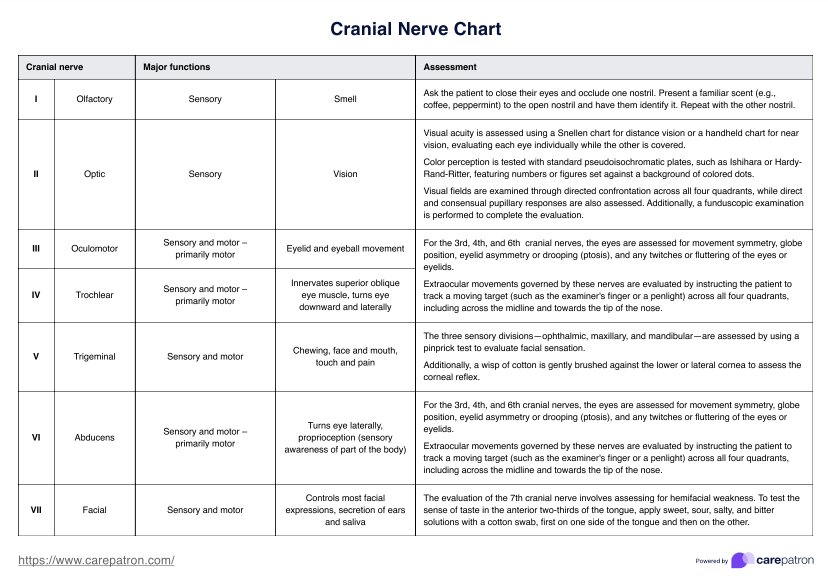You can use it as a checklist with sections where you can write down your observations.

Cranial Nerve Chart
Use this Cranial Nerve Chart during a comprehensive examination to track what cranial nerves you need to assess. Learn more about it through this guide.
Use Template
Cranial Nerve Chart Template
Commonly asked questions
Yes. If your team relies on computers to record your information instead of printing copies of the chart, you can still use it. The PDF file has interactable parts, such as checkboxes and fillable fields.
One example is the function of the sixth cranial nerve (abducens nerve), which sends signals to the lateral rectus muscle. These signals help the lateral rectus muscle help our eyes look from left to right.
EHR and practice management software
Get started for free
*No credit card required
Free
$0/usd
Unlimited clients
Telehealth
1GB of storage
Client portal text
Automated billing and online payments











